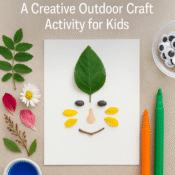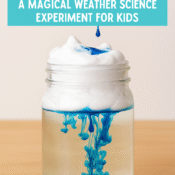Color Lab: DIY Science with Natural Dyes
Why Kids Struggle with Science Engagement at Home
Many children associate science with boring textbooks or abstract diagrams, making it difficult to connect with real-world experiences. Parents want hands-on activities that are safe, low-cost, and meaningful—but few know where to start. Natural dye science is the perfect way to bridge that gap: it’s artistic, sensory, and surprisingly scientific.
How Natural Dyes Help Kids Understand Chemistry Concepts
Creating colour from nature allows children to:
- See visible chemical changes (like pH reactions)
- Build observation and recording skills
- Learn cause-effect relationships in real time
- Connect science to culture, food, and the environment
This aligns with how we present sensory science in our Hands-On Chemistry Archive, where we blend science with creativity to promote lasting learning.
Your Step-by-Step Dye Lab
(Time: 60 min | Difficulty: ★★☆)
Materials You’ll Need:
- Red cabbage, turmeric, or beetroot
- White vinegar, baking soda, water
- Stove, pot, and containers
- White coffee filters or cotton scraps
- Pipettes or spoons for mixing
Instructions:
- Prepare Your Natural Dye
- Chop red cabbage or beetroot and boil for 15 minutes to extract colour.
- Mix turmeric with warm water in a separate cup.
- Create pH Reactors
- Divide each dye sample into two cups.
- Add a spoon of vinegar to one, and baking soda to the other.
- Observe and record the colour shift.
- Design Your Art
- Fold or cut coffee filters into fun shapes.
- Use droppers to apply the altered dyes and create science-inspired tie-dye effects.
- Extend the Activity
- Try the same process with spinach, onion skin, or blueberries.
- Explore how heating or drying changes the colour.
What Parents Are Saying
“My kids were amazed when the cabbage dye turned pink with vinegar! They asked if we could do it again tomorrow.” — Tessa, QLD
“This was such a low-mess way to introduce chemistry. It felt like art class and science lab all in one.” — Ameen, VIC
Want More Colorful Learning?
Check out our Color-Coded Science Challenges
Try our pH Indicator Balloon Activity
Explore the full Sensory Science Archive
Best for Ages: 6–10
Related Category: Hands-On Science for Ages 6–8
Download the Color Lab Kit (PDF)
Includes:
- Printable Experiment Tracker
- pH Reaction Colour Chart
- Natural Dye Ingredient Guide
- Award Certificate: “Junior Color Chemist”
FAQ: Common Questions About Natural Dye Activities
Q: Are natural dye experiments safe for young kids?
A: Yes! All ingredients are food-safe. Adult supervision is suggested during boiling.
Q: Will the colours stain?
A: Some ingredients like turmeric or beetroot may stain clothing—wear aprons and use newspaper.
Q: Can this be turned into a science fair project?
A: Absolutely. Try comparing different ingredients’ colour ranges or drying times.
Alt Text Tips for SEO (for blog images):
- Child applying purple dye to paper towel art
- Comparison of red cabbage dye reactions in acidic and basic setups
- Flat lay of natural dye lab setup with ingredients
Final Thoughts: Science That Shows Its True Colors
This isn’t just a craft—it’s chemistry your kids can touch. By exploring natural dyes, children discover how everyday materials reveal scientific patterns. It’s creative, educational, and reusable. Most importantly, it transforms “science time” into a sensory experience your child will remember.
Next time the question is “Why is science important?” let the colours answer.





[…] challenges use colours as organisational and functional tools in science exploration. Each activity is tied to a specific […]